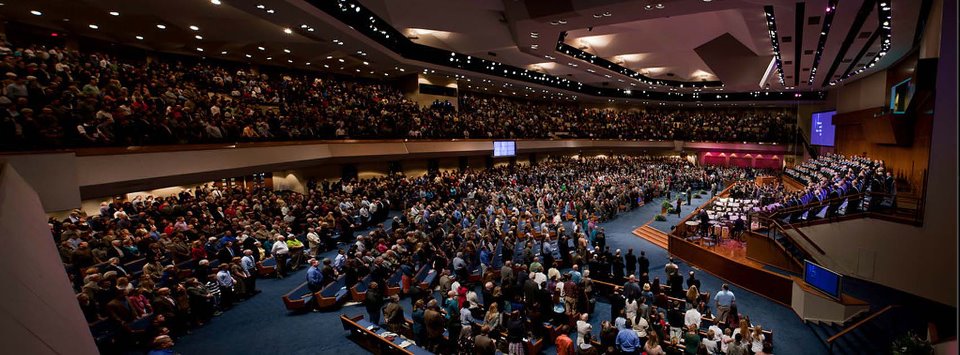In the desire for church renewal and a reversal of decline, much attention is being given to churches which are big. In the field of church planting there seems to be a disproportionate amount of interest and publicity given to those new churches which grow quickly to a significant size. The so-called ‘resource churches’ have burst on to the scene in recent years, a combination of the model expanding beyond its London origins and the availability of large amounts of money to invest in them through the Church of England’s Strategic Development Fund.
Does the high profile and strategic priority of the resource churches imply however that big is best? As the Church Army’s research has discovered, the vast majority of fresh expressions of church planted in the past 25 years (over 1000 of them) are small. The average size is around 50 attenders and yet collectively these churches have been highly effective in growing and in engaging people from unchurched backgrounds. Interestingly, nearly half of these new churches reach a numerical plateau, a kind of ‘natural unit size.’ Presumably any vision for growth beyond this size for these churches starts to threaten their very nature and identity. They remain faithful to the size they seem called to be.
Whilst the proliferation of small and effective communities quietly grows, large churches continue to make the headlines. Perhaps it is because this speaks so potently into our need for bold stories of hope. Perhaps because they offer financial solutions that perhaps fresh expressions often do not (at least not quickly enough). Church institutions up and down the country are keen to promote resource churches when they can grow to a sustainable level and beyond in a matter of a few years. A ‘return on investment’ is likely within a relatively short space of time, making the upfront expenditure much lower in risk.
The research that has been done so far on the growth of resource churches suggests that they do engage unchurched and dechurched people and that they can be effective in renewing churches of various traditions. They are also capable in many instances of further church plants themselves, in which case they start to be truly ‘resource churches’, communities that gather the sufficient capacity to plant again and again. This research in support of resource churches is important and welcome because it begins to help answer the question of the extent to which large resource churches can be replicated reliably. Or more specifically, it begins to help answer the question whether this model of church planting is appropriate for all contexts.
Is there any theological insight into this question of church size? John Taylor in his seminal book ‘The Go-Between God’ explores the question of church size. His starting point however is not the church as we experience it, or whether this church or that church ‘works’, but the church’s essential nature as a fruit of the work of the Holy Spirit. For Taylor a primary spiritual nature of the early church is mutuality in community, expressed by the word allelon, ‘one-another’, a word that occurs frequently in the New Testament. Taylor he argues that church must be:
- of a shape and size that enables this ‘one-anothering’. This is the fruit of the indwelling Holy Spirit. This is a hallmark of the church’s spiritual identity, about what the church is before it is about what it does
- of a significant enough size to ‘be an embodiment of the life of the Kingdom’ but not so big as to tend toward a withdrawal from that sense of church alongside and amidst others in the world.
- not so big that it has to be structurally organised to the extent that it thinks of itself primarily as an institution rather than a community.
All of this leads him to espouse the virtues of the ‘little congregations’. These congregations will take on different forms and be present in different places and amongst different people, and through their small size enable the embodiment of the Kingdom and the mutual interdependence of people in Christian community. For Taylor, whilst he can argue for the effectiveness of such congregations, his passion for them is theological as well as practical: ‘it is the ‘little congregations’ which must be normative if the church is to respond to the Spirit’s movement in the life of the world’.
For me this relationship between size and the church’s response to the movement of the Spirit is key. In a context of accelerating social and technological change any organisation must constantly be alert to the world around it, to enable adaptability and foster innovation. The church must remain alert to its changing context and the work of the Spirit in the world. In any given context the larger a church is, the more embedded and cumbersome its structures and programmes and the less able it is to listen and adapt. Smaller communities are alert to their context and, through the quality of their ‘one-another-ing’ more able to tell the evolving story of their context and then reflect back the signs of the Spirit’s movement in the wider community. All of which enables greater responsiveness, adaptability and innovation.
It is worth noting that Taylor saw these ‘little congregations’ existing alongside parish churches (ie larger congregations) and existing in relationship with them. So there may well be a role for more large, resource churches across the country – but if we are to connect with every context in our rapidly changing post-Christian society, it is alert, responsive and innovative ‘little congregations’ which must also be given profile, attention and investment.
Main photo by Fbcjax (Own work) [GFDL or CC BY-SA 3.0], via Wikimedia Commons

